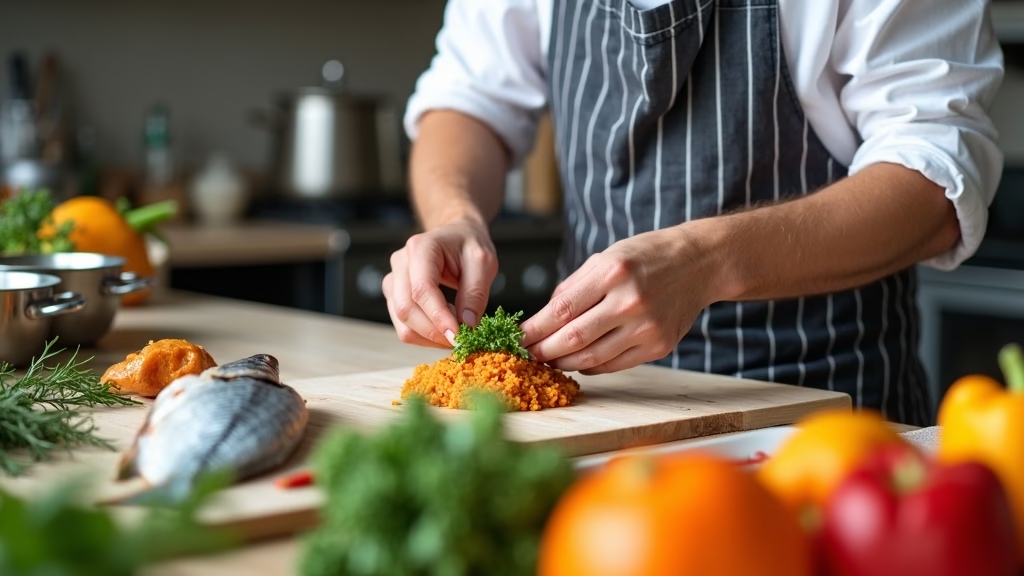Unveiling Chef Secrets: Why Gloves Aren’t Always the Answer
Why Chefs Don’t Wear Gloves: A Deep Dive Into Culinary Practices
Ladies and gentlemen, while many believe that kitchen gloves guarantee hygiene, the true reasons chefs often forego them are rooted in scientific studies, practical experience, and environmental considerations. This multifaceted issue invites us to explore not only what happens in the kitchen but also the underlying implications that resonate beyond its walls. Unraveling this topic reveals unexpected truths and highlights the intricate balance between safety and craftsmanship in culinary arts.
Hygiene and Psychology
The Illusion of Safety
Research from the CDC has pointed out that gloves often foster a false sense of security among food workers. Those gloved are less likely to wash their hands regularly during food preparation compared to their bare-handed counterparts. The chilling reality is that bacteria inside gloves can multiply up to ten times faster than on clean hands. This paradox creates a scenario where chefs, believing themselves protected by a layer of plastic, inadvertently increase the risk of contamination instead.
Tactile Sensitivity Matters
Equally crucial is the loss of tactile feedback that comes with wearing gloves. Culinary tasks require precision, especially when handling delicate ingredients like fillets of fish or fragile herbs. Chefs have noted that donning gloves compromises their ability to gauge texture, leading to mishandling of products and, at times, more severe accidents, such as cuts or burns. The artistry of cooking thrives on tactile interaction, and for many chefs, the gloved hand feels like a restriction, akin to a boxer fighting in oversized mitts.
Ecological and Economic Considerations
Plastic Usage and Environmental Impact
More kitchens are adopting sustainable practices, moving away from single-use plastics in a bid to alleviate environmental pressure. Many chefs advocate for rigorous hand washing over the use of gloves, a practice that not only meets hygiene standards but also significantly reduces plastic waste. The culinary world now faces the question: can we cook with conscience? This shift indicates a growing awareness that every action in the kitchen, including the choice of gloves or lack thereof, impacts the larger ecosystem.
Cost Implications in Commercial Kitchens
Let’s not ignore the economic aspect. For large kitchens, the ongoing expense of purchasing single-use gloves can add up to significant yearly costs. When chefs choose to rely on thorough handwashing, they’re not just reducing waste but also cutting back on unnecessary expenditures. This dual benefit—cost and ecological responsibility—shows that efficiency and sustainability can align beautifully in culinary practice.
Regulations and Exceptions
Mandatory Requirements in Specific Situations
While gloves may not always be favored, there are certainly regulations that demand their use under specific conditions. For instance, if a chef has an open wound on their hands or is handling ready-to-eat foods that are not subject to heat treatment, wearing gloves becomes non-negotiable. These safety protocols ensure that the integrity of the food is maintained, reflecting the delicate balance between health and culinary creativity.
Creativity and Culinary Freedom
For some chefs, the restriction imposed by gloves symbolizes a broader tension within the culinary field. Comparing gloves to boxing gloves, they suggest that such coverings limit fluid movement and expression in their craft. The freedom to feel and manipulate ingredients directly correlates with their ability to create intricate dishes that tell a story through taste and presentation. Thus, the decision to don or ditch gloves is not merely a matter of compliance but an expression of artistic identity.
The conversation around glove usage in kitchens is much more profound than it appears on the surface. Behind each choice lies a tapestry of hygiene principles, ethical considerations, and a deep passion for culinary craftsmanship. In examining these nuances, we open the door to a richer understanding of what it truly means to prepare food—not just safely but mindfully.
For more insights and fresh news surrounding these evolving culinary practices, visit Newsmagazine and keep yourself updated.
Stay tuned, as the next installment will delve deeper into innovative alternatives that chefs are embracing in their kitchens today.
Embracing Alternatives in Culinary Practices
Innovative Hygiene Solutions
As chefs navigate these complex layers of safety and sustainability, many are turning to alternative hygienic practices that prioritize both cleanliness and the tactile joy of cooking. One approach that has gained traction is the strategic use of reusable gloves paired with rigorous handwashing protocols. This compromise allows for the dexterity of bare hands while still providing an option for heightened safety when necessary. By incorporating the principles of mindful hygiene, chefs can foster a safer cooking environment while still expressing their artistry.
Enhanced Handwashing Techniques
Moreover, innovations in handwashing techniques are proving to be invaluable. Chefs are now being encouraged to adopt methods that include sanitizing stations within kitchens, featuring easy access to soap, running water, and disposable towels. Regular handwashing intervals, as advocated by food safety experts, function as effective safeguards against contamination. In fact, educational initiatives are being rolled out, underscoring how a simple act of washing hands, when performed correctly, far surpasses the protection offered by wearing gloves.
The Impact on Food Quality and Craftsmanship
A Focus on Craft Over Convenience
Ultimately, the decision to forgo gloves is deeply tied to the philosophy that culinary artistry must prevail over convenience. Chefs are increasingly aware that their hands are not merely tools but extensions of their passion and creativity. By maintaining direct contact with their ingredients, they enhance their sensory perception, leading to refined techniques and exceptional dishes. This dedication to craft draws diners into a more intimate experience, where the love for food is palpable in every bite. For many, this approach emphasizes an unbroken connection between the chef and the food, a vital aspect often lost in a sterile kitchen environment.
Community and Cultural Reflections
The debate surrounding glove use is also reflective of cultural attitudes towards food preparation and safety. In various cultures, the methods of cooking and food handling vary significantly, often influencing the decisions made by chefs on an individual basis. For instance, in some culinary traditions, the act of hands-on cooking is viewed as a sign of respect for the food. This cultural mindfulness adds yet another layer to the complex tapestry of culinary practices, inviting chefs worldwide to explore not only effectiveness in cooking but also the stories behind each practice.
Conclusion: Redefining Culinary Safety and Sustainability
In conclusion, the reasons chefs choose not to wear gloves resonate far beyond hygiene compliance. They reflect a dynamic interplay of personal philosophy, professional artistry, and environmental consciousness. The rigid adherence to one method—whether it be the compulsory use of gloves or complete rejection—fails to capture the essence of what it means to cook with care in today’s world. As chefs continue to redefine culinary safety and sustainability, they remind us that the heart of cooking lies not in the materials we use, but in the way we connect with our ingredients and the stories they tell.
As this culinary conversation evolves, it’s imperative to keep questioning and exploring the multifaceted relationship between the art of cooking and our responsibility toward safe and sustainable practices. For further reading on this insightful topic, one may explore this article. Stay tuned for more updates and discussions in our community as we navigate the ever-changing landscape of food safety and culinary innovation.
For more insights and fresh news surrounding these evolving culinary practices, visit Newsmagazine and connect with the latest updates on our Telegram channel, “Always Fresh News” at this link.
latest video
news via inbox
Subscribe to the latest news in the world of politics and technology







